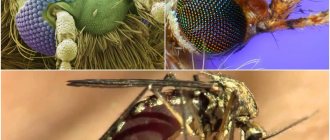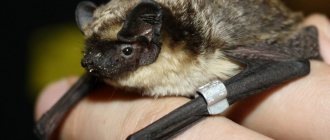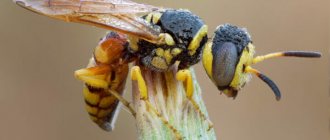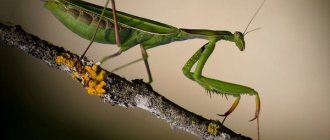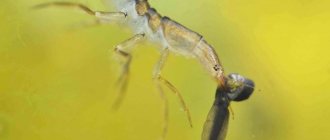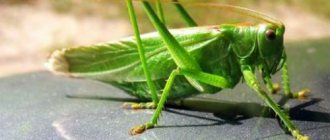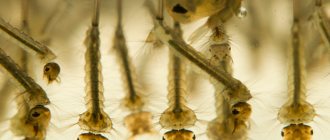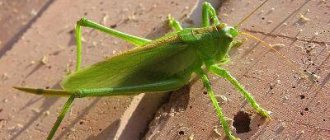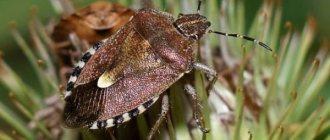- How do bats navigate in the dark?
Contrary to their name, their bat namesakes are not even related to ordinary mice. While ordinary mice belong to the order of rodents, bat mice are representatives of the order Chiroptera, which has little overlap with rodents. But where did the name "bat" come from? The fact is that bats were so named due to their small size and squeak, very similar to the squeak of mouse rodents.
Bat - description, structure. What does a bat look like?
The order Chiroptera, to which bats actually belong, is especially notable for the fact that they are, in fact, the only mammals capable of flight. Now, it’s true that the order of chiropterans includes not only flying mice, but also other no less flying brethren: flying dogs, flying
foxes, as well as fruit bats, which differ from their counterparts - ordinary bats, both in their habits and in their body structure.
As we already mentioned, bats are small in size. The weight of the smallest representative of this species, the pig-nosed bat, does not exceed 2 grams, and the body length reaches a maximum of 3.3 cm. In fact, this is one of the smallest representatives of the animal kingdom.
The largest representative of the bat family, the giant false vampire, has a mass of 150-200 g and a wingspan of up to 75 cm.
Different species of bats have different skull structures, the number of teeth also varies and largely depends on the diet of a particular species. For example, the tailless long-tongued leaf-nosed insect, which feeds on nectar, has an elongated facial part. Nature wisely made it so that he had somewhere to accommodate his long tongue, which in turn is necessary for getting food.
But predator bats that feed on insects already have a so-called heterodont dental system, which includes incisors, canines and molars. Small bats, which eat even smaller insects, have up to 38 small teeth, while large vampire bats have only up to 20. The fact is that vampires do not need many teeth, since they do not chew their food. But they have sharp fangs that make a bleeding wound on the body of the victim.
Traditionally, bats, almost all species, have large ears, which are responsible, among other things, for their amazing echolocation abilities.
The forelimbs of bats were transformed into wings over a long period of time.
evolution. The elongated fingers began to serve as the frame of the wing. But the first finger with the claw remains free. With its help, bats can even eat and perform various other actions, although in some of them, such as smoky bats, it is not functional.
The speed of a bat depends on the shape and structure of its wing. They, in turn, can be very long, or vice versa with a slight extension. Wings with a lower aspect ratio do not allow them to develop high speed, but they can be easily maneuvered, which is very useful for bats living in the forest, which often have to fly among the treetops. In general, the flight speed of a bat ranges from 11 to 54 km per hour. But the Brazilian folded lip, from the genus of bulldog bats, is the absolute record holder for flight speed - it is capable of reaching speeds of up to 160 km per hour!
The hind limbs of bats have a characteristic difference - they are turned to the sides with the knee joints back. With the help of well-developed hind legs, bats hang upside down, and in this seemingly (to us) uncomfortable position they sleep.
Bats, like any decent mammals, have a tail, which also varies in length depending on the species. They also have bodies (and sometimes limbs) covered with fur. The coat can be smooth, shaggy, short or thick, again depending on the species. The color also varies, usually whitish and yellowish shades predominate.
A Honduran white bat with a very unusual coloring - white fur contrasts with yellow ears and nose.
However, there are also representatives of bats with a body completely without hair - these are two naked-skinned bats from Southeast Asia.
The vision of bats leaves much to be desired; the eyes are poorly developed. In addition, they do not distinguish colors at all. But poor eyesight is more than compensated by excellent hearing, which, in fact, is the main sense organ in these animals. For example, some of the bats can detect the rustling of insects swarming in the grass.
Their charm is also well developed. For example, females of the Brazilian folded lip are able to find their cubs by smell. Some bats sense their prey by smell, as well as by hearing, and can also distinguish between “their” and “foreign” bats.
How do they reproduce?
Due to the secretive lifestyle of bats, scientists were only able to collect general information about their reproduction.
Bats living in warm latitudes are more fertile, as they bear offspring twice a year. Bats that live in temperate climates mate only once a year before going into hibernation. In such subspecies, embryo development is delayed. The duration of pregnancy largely depends on the ambient temperature. At a time, a bat brings from one to three babies.
How they are born
Baby bats are born with their hind legs first, which is very rare for mammals. Before giving birth, the female turns her head up until the baby emerges. Once born, the baby spends a week in the mother's tail pouch. Then the female looks for shelter and hides the brood there, periodically flying up and feeding the children with milk. A baby bat becomes independent within a month.
How do bats navigate in the dark?
It's simple, bats “see with their ears.” After all, they have such an amazing property as echolocation. How does it work? And so, animals emit ultrasonic waves, which are reflected from objects and return back through an echo. Incoming return signals are carefully recorded by bats, thanks to this they are perfectly oriented in space and even hunt. Moreover, through reflected sound waves they can not only see their potential prey, but even determine its speed and size.
To emit ultrasonic signals, nature has equipped bats with a specially designed mouth and nose. First, the sound originates in the throat, then is produced by the mouth and goes to the nose, radiating through the nostrils. The nostrils themselves have various bizarre projections that serve to shape and focus sound.
People can only hear how bats squeak, because the ultrasonic waves emitted by them are not perceived by the human ear. Interesting fact: earlier, when humanity did not know about the existence of ultrasound, the amazing orientation of bats in pitch darkness was explained by the presence of extrasensory abilities.
Appearance
Bat, description: most of the animal’s body is devoted to the wings . If you do not take them into account, you can note a miniature body with a short neck and an elongated head. The mouth slit of the animals is large , through which sharp teeth can be seen.
Some types of bats charm people with their pretty faces, while others frighten them with their unusual nose shape , disproportionately large ears and amazing growths on the head.
The cutest bat of the fruit bat family is considered to be the fruit dog : it has large open eyes and an elongated nose, similar to a fox. Interestingly, the names of some types of mice were given based on the shape of the animals’ noses: pig-nosed, horseshoe-nosed, smooth-nosed.
The white bat has a kind of “horn” on its muzzle, giving its nose the shape of a petal. Thanks to this device, the animal's forward-facing nostrils capture odors faster and more efficiently .
The bulldog mouse has a no less : on its muzzle in the transverse direction there is a cartilaginous fold running above the nose from one ear to the other. The cartilaginous roller brings the edges of the ears together, increasing their area for more perfect hearing, necessary for orientation in space during flight.
The large ears of the long-eared bat are an equally effective acquisition for chiropterans for perfect echolocation . The frightening appearance of vampires served as the basis for legends that predatory flying bats are capable of attacking humans in search of fresh blood. Is this true or a myth? Read the article about bat bites.
You can “read” about the mouse’s lifestyle and even nutrition by looking at the animal ’s face For example, fruit lovers do not need the powerful locators needed by flying representatives that traverse their surroundings at night. But their nostrils are wider: they look for food, focusing on smells .
Where do bats live?
They live practically all over the world, of course, with the exception of the cold Arctic regions. But most of them live in the tropics and subtropics.
Bats are nocturnal or crepuscular. During the day, they usually hide in various shelters, both underground and above ground. They especially love caves, quarries, mines, and can hide in tree hollows or under branches. Some bats even take shelter under bird nests during the day.
Bats, as a rule, live in small colonies - up to several dozen individuals. But there are colonies of bats that are much more populous; the colony of Brazilian folded lips is considered a record, boasting the presence of 20 million individuals. On the other hand, there are bats that prefer to lead a solitary lifestyle.
Favorite places to settle
Where do bats live? Since they are nocturnal and crepuscular animals, they need a secluded and safe daytime shelter .
Depending on the size and structural features of the limbs, it directly depends on where the bat lives. These animals choose the most suitable ready-made natural shelters for them - caves and rock crevices , depressions in the walls of cliffs and the slopes of dunes, hollows and holes left by their inhabitants.
Some tropical species build improvised umbrella huts from large leaves, gnaw out personal niches in bundles of palm fruits, or climb into the voids between the nodes of bamboo trunks.
Human encroachment into nature is destroying the natural habitats of bats; many of their species are becoming rare and disappearing. However, the bat's adaptability to its habitat is very high and, in the vicinity of people, bats try to discover new shelters for themselves, similar to their favorite caves, burrows, hollows and crevices.
In Egypt, they mastered the internal labyrinths of the great pyramids , in abandoned mines and adits in exhausted mining areas, in cities and villages they inhabit attics, basements, cellars, haystacks, woodpiles, and sneak behind shutters and under window frames.
Information: Representatives of most species prefer to settle in large colonies.
To attract bats in gardens and farms, special houses made of slats with a secluded lower entrance - a narrow slot, similar to inverted mailboxes - are hung on trees at a height of at least 3 meters.
Why do bats sleep upside down?
The seemingly strange habit of bats sleeping upside down, hanging on their hind legs, also has very practical reasons. The fact is that this position allows them to instantly take flight. To do this, you just need to unclench your paws. Thus, less energy is wasted and time is saved, which can be very important in case of danger. The hind legs of bats are designed in such a way that hanging on them does not require the expenditure of muscle energy.
What do bats eat?
Most bats feed on insects, but there are also absolute vegetarians among them, preferring pollen and plant nectar, as well as various fruits. There are also omnivorous bats that love both plant foods and small insects, and some large species even hunt fish and small birds. Bats are excellent hunters, largely due to their wonderful echolocation property, which we described above. Vampire bats stand apart in terms of nutrition, feeding exclusively on the blood of wild and domestic animals (however, they can also feast on human blood), hence the name.
Types of bats, photos and names
Here is a description of the most interesting bats in our opinion.
White leaf-nosed bat
It is especially interesting for its appearance, yellow ears and nose against a background of white fur. It also differs from other bats in the absence of a tail. The white leaf-nosed plant is very small in size, its body length does not exceed 4.7 cm, and its weight is 7 grams. Leaf-noses live in South and Central America, preferring moist forests as a home. They are herbivores and feed exclusively on fruits. They live in small colonies of up to ten individuals.
Giant noctule
The giant noctule is the largest bat found in Europe. The body length of the noctule reaches 10 cm, and the weight is 76 grams. Has brown fur. The noctule usually lives in forests, inhabiting tree hollows. You can also find it on the territory of our Ukraine. Feeds on large insects, beetles,
butterflies. Also listed in the Red Book.
Hog-nosed bat
It is notable for the fact that it is the smallest representative of the bat family. Its length is only 2.9-3.3 cm, and everything is no more than 2 grams. However, it has quite large ears. The nose is very similar to the snout of a pig, hence the name of this species. The pig-nosed bat's color is often gray or dark brown. They live in Southeast Asia, especially many of them live in Thailand and its neighboring countries. An interesting feature in the behavior of pig-nosed mice is their collective hunting. They hunt in groups of up to five individuals at night. Due to their small numbers, pig-nosed bats are currently listed in the Red Book.
Two-color cauldron
This species got its name due to the color of its fur, which has two colors - its back is red or dark brown, and its belly is white or gray. The two-colored kazan lives across a wide range: from England and France to the Pacific Ocean. These bats are found not only in natural conditions, but also in human cities; they can easily live in the attics and eaves of houses. Night for them is the time to hunt for various small animals - flies,
mosquitoes, moths Also endangered.
Water bat
She is also Daubanton's bat, named after the French naturalist Louis Jean Marie Daubanton. It is small in size, its length is no more than 5.5 cm, and its weight is up to 15 grams. The fur color is usually dark or brown. The habitat is the same as that of the kazhan, almost throughout the entire territory of Eurasia. The life of the water bat is closely connected with bodies of water (hence the first name), it is near them that they like to hunt, especially mosquitoes, which are also found in abundance near ponds and lakes.
Brown long-eared bat
The Ushan is so named due to its amazing, by no means small, ears. The long-eared bat also lives in Eurasia, but is also found in North Africa. They like to live in mountain caves, where they lead a sedentary lifestyle.
Dwarf bat
He is also the small-headed bat - the smallest representative of bats in Europe, his body length is no more than 45 mm, and his weight is up to 6 grams. His body really is very similar to that of an ordinary mouse, only with wings. This species also loves to settle in places close to humans.
Great horseshoe bat
This species is mountainous, as it loves to settle in mountain caves, canyons, and crevices. It lives over a wide geographical range - Eurasia and North Africa, wherever there is mountainous terrain you can find a large horseshoe bat. They hunt moths and beetles.
Common vampire
It is thanks to this species that bats, which are generally very useful in the ecosystem (at least by killing mosquitoes), have their bad reputation. But an ordinary vampire, in fact, like the famous Count Dracula, feeds on blood, including possibly human blood. But as a rule, various domestic animals become their victims and food supply:
cows, horses, pigs. Vampires, as expected, go about their dark business at night, when their victims are in deep sleep. They sit on them unnoticed, biting through the skin of the victim, from which they then drink blood. However, a vampire’s bite is invisible and painless due to the special secret that they possess. But this is where the danger lies, since the victim may die from blood loss. A vampire bite can also transmit the rabies or plague virus. Fortunately, vampire bats live only in the subtropics of Central and South America; in our latitudes, bats are absolutely harmless.
Character and lifestyle
Bats live in places where little daylight penetrates. These animals settle in large groups, sometimes the number of such a settlement can reach more than one thousand individuals.
The photo shows a group of bats in a cave
Their home is dark, damp caves, hollows located in the trunks of large trees, abandoned basements, in general, all places where they can hide from prying eyes. Bats sleep hanging upside down, and wrap themselves in their wings like a blanket. With the onset of dusk, the animals go hunting.
It should be noted that the bat not only moves well in the air, but also perfectly climbs steep surfaces, like an experienced rock climber, and can also move well on the ground, and if necessary, it can hover over water for a while in order to catch it from there. fish delicacy. When mice fly, they always scream loudly. The sound power of a mouse squeak is comparable to the noise of a jet engine.
Listen to the voice of the bat
If people could detect ultrasonic waves, then bearing the screams of flying creatures would not be difficult, but simply unbearable. The scream stops only for a few seconds, while the mouse swallows the caught prey. Bats spend the winter hibernating, and those who do not like to spend the winter in harsh conditions fly to warmer climes.
In the photo the bat is sleeping
Nowadays, you can often meet people who like to keep exotic animals at home. For the price , of course, a bat is suitable for many average citizens, but the conditions of detention and food for the animal can cost a pretty penny.
In addition, people need to know that if they decide to buy a bat , then they should not expect that this animal will become a quiet pet.
In addition, creating acceptable living conditions is not very easy, the same can be said about the diet, because mice do not eat everything, but only what they like.
Enemies of bats
Bats also have their own enemies, who in turn can hunt them. Usually these are birds of prey: peregrine falcons, hobby birds,
hawks, and also owls. A snake, marten and weasel will not mind grabbing a bat.
But the main enemy of bats (as well as many other animals) is, of course, humans. The use of chemicals in crop production has significantly reduced the number of bats; many of the species are already listed in the Red Book, as they are on the verge of extinction.
Benefits of bats
But the benefits of bats are much greater:
How to get rid of bats
But still, if bats have settled near the house, for example, under the roof, despite all their benefits, they can be annoying, especially because of their squeaking. To get rid of bats under your roof, cottage or attic, you need to follow these instructions:
- First you will need to find a place where bats rest during the day. Then, after waiting for them to fly away for the night hunt, simply cover this place with a crowbar or something else.
- You can try to smoke them out.
- You can spray their habitats with special sprays whose odors will repel mice.
Interesting facts about bats
- Bats always fly to the left side of cover.
- Substances contained in the saliva of vampires are now used as medicines to prevent the formation of blood clots.
- If in our culture bats are associated with vampires and other evil spirits, then in Chinese culture they are, on the contrary, symbols of harmony and happiness.
- The bat is very voracious, so in an hour it can eat up to 100 mosquitoes, in human terms, this is about the same as eating a hundred pizzas in an hour.
Skeleton and wings
The skeleton of a bat has its own characteristics. The limbs of bats are modified: they serve as the backbone for the wing . The humerus of these animals is short, and the bones of the forearm and the last 4 fingers are elongated in order to increase the area of the flight “mantle”.
A fibrous skin fold is stretched from the neck to the fingertips of the animals. The thumb with a prehensile claw is not included in the wing; the animal needs it for grasping . The rear (interfemoral) part of the membrane is stretched between the hind legs and the long tail.
See what bat wings look like in the photo below:
